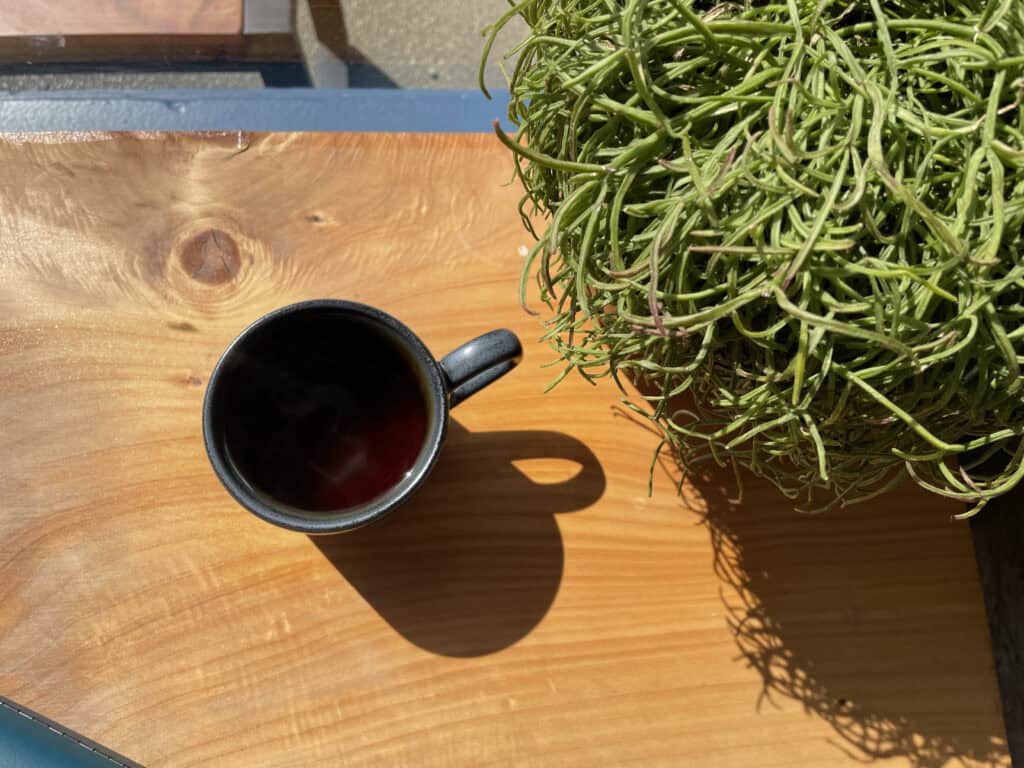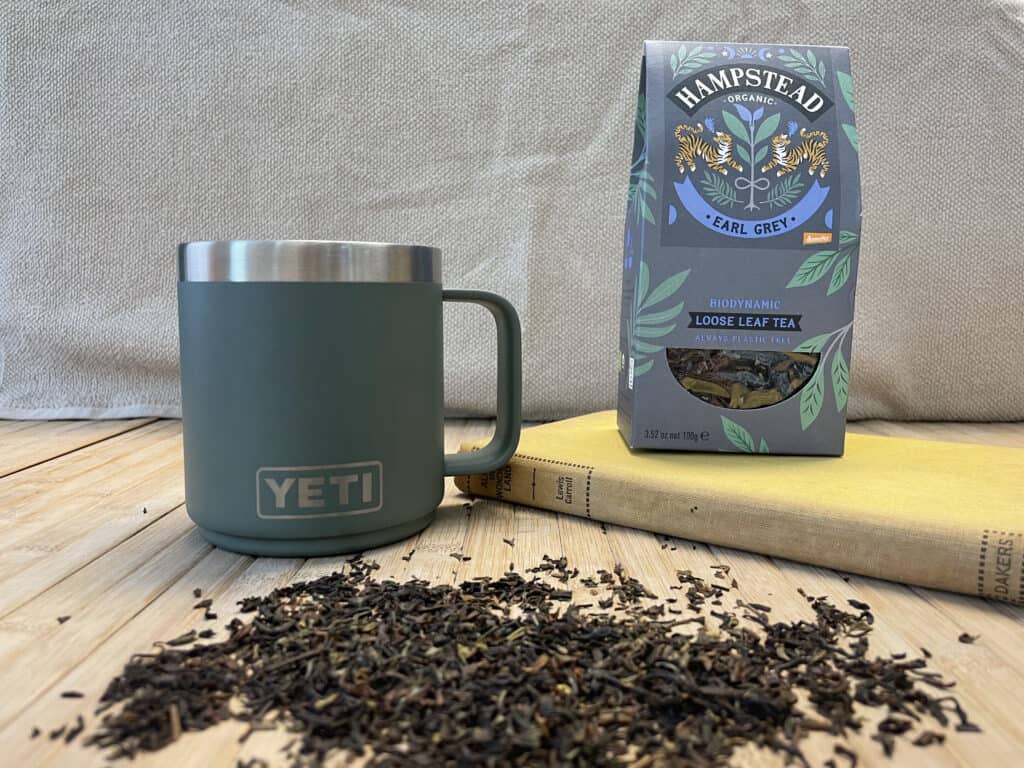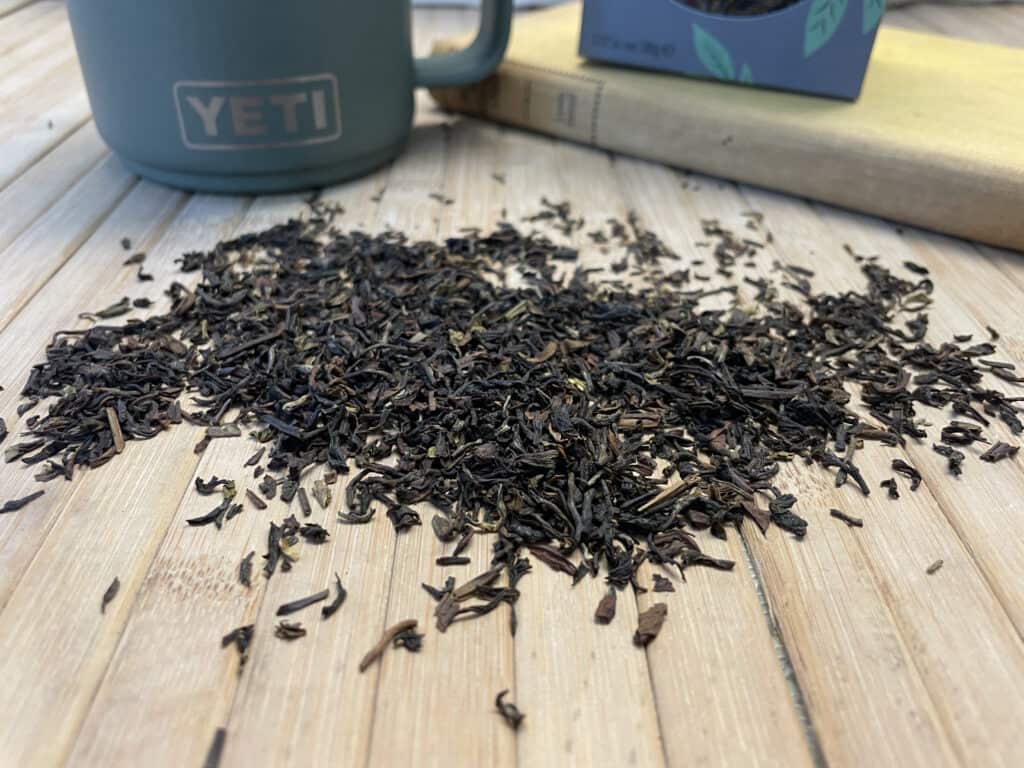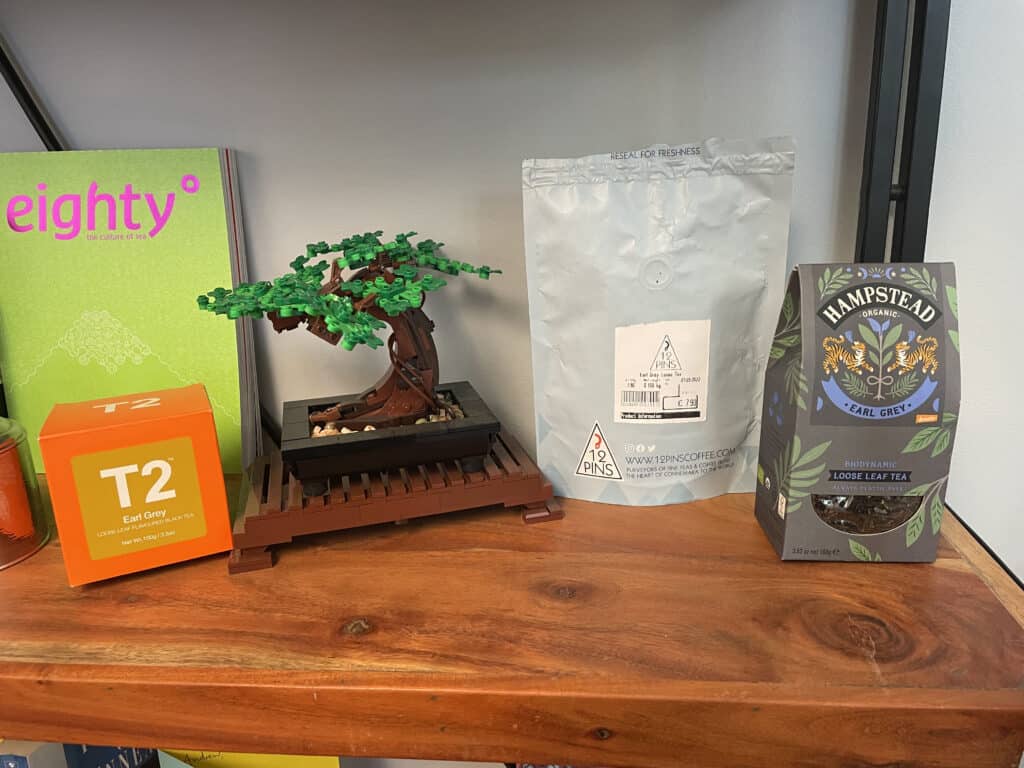When it comes to Earl Grey tea, it could be argued that it is the Marmite of the tea world. I personally love this interesting blend and enjoy a cup or two of it nearly every day.
What Is Earl Grey Tea?
Earl Grey Tea is a blend of black tea, bergamot oil (which is a citrusy fruit from the orange family) and often blue cornflower petals (they do not add to the flavour, only the appearance). The teas most often used in Earl Grey are bold and have a robust flavour such as Keenum, Assam or Ceylon tea.

What does Earl Grey Tea Taste Like?
Earl Grey is instantly recognisable for anyone who has enjoyed a cup of it before. At its base, this blend takes advantage of robust teas such as a malty Assam from North East India, Keemun tea from the An Hui region in China or Ceylon tea from present day Sri Lanka. These teas are most often used for their flavour profiles which are characterised by hardy and robust notes which can hold up against the addition of added flavourings. As you will now be aware, what sets Earl Grey apart from other flavoured teas is the addition of bergamot oil to the tea blend.
The flavour profile of a bergamot tea can vary from company to company but most are on the sweeter citrus side, with identifiable floral notes. Occasionally, notes of grapefruit and mild lime can be picked up depending on the blend.
Where did the name Earl Grey come from?
While Earl Grey tea is shrouded in much controversy as to its exact origins, the individual this blend is named after is fairly well established as a fact.
The unique addition of bergamot oil to tea is named after Charles Grey, the 2nd Earl Grey who was Prime Minister of the United Kingdom from 1830 – 1834. While most often associated with Earl Grey tea, it would go amiss to not mention the fact that this beloved drink’s namesake was much more than a lover of tea.
Charles Grey was a very vocal voice for the oppressed and was instrumental in the passing of the Great Reform Act in 1832 & The Slavery Abolition Act of 1833, which caused vast social and political change for the most vulnerable in society at that time.
Where the controversy occurs is when we try to prise a little deeper into the story. There are numerous (as is often the case with tea lore) stories of how Earl Grey came to be named after the 2nd Earl in the first place.
As much as the English like to think they invented Earl Grey tea, this type of tea blending was going on for hundreds of years before Charles Grey ever had an afternoon cup of his soon-to-be ‘Earl Grey’.
Chinese Tea Masters have been producing flavoured tea since the Tang Dynasty (618-907). This involved a laboriously slow process of placing tea in sealed containers with scented flowers. As tea absorbs moisture and smells, this allowed the tea to take on new and complex flavours.

A few famous scented/flavoured teas from this time are:
- Jasmine flavoured tea
- Rose flavoured tea
- Lotus flavoured tea
One account of how the drink came to be named after Charles Grey is that a visiting Chinese official gifted him a chest of tea which had been blended with a flavourful and citrusy bergamot oil as a thank you. The story goes that one of the Earl’s servants saved the Chinese official’s sons from drowning.
After experiencing the unique flavours of this tea, he requested local London tea merchants to recreate the flavoured tea. In this new trend, the tea merchants were happy to oblige with the hope that if they could recreate this tea for the Prime Minister, they may well be looking at a very popular blend.
The other most common story is that the blend was created to offset the high lime content in the water system at Charles Grey’s estate (Howick Hall) near Newcastle in England. As Earl Grey tea has one of the higher acidity levels in tea, it was well equipped to deal with the higher than normal alkaline water at the residency.
Both Twining’s and Jacksons of Piccadilly (which was bought by Twining’s in 1990) claimed to be the original creators of the tea blend that Charles Grey and his closest friends fell in love with. While there is no evidence, it may have been the case that Charles Grey gave the challenge to several tea merchants to better his chances of getting the blend right.
Over time, this blend edged its way into popular culture and before long, most well-off Londoners had a tin caddy of Earl Grey Tea in their Kitchens.
How is Earl Grey Tea made?
To make Earl Grey, a tea blender will choose their base tea. This can be a single-origin tea from one tea estate or a blend of teas. Terroir (the climate, altitude, soil quality and rain levels) plays a big role in choosing the perfect tea for an Earl Grey blend. Depending on where and when the tea leaves are plucked, will have a significant impact on the flavour in your cup. Ideally, the tea needs to be strong enough to still be noticed but not too strong as to overpower the bergamot flavour.
Next, they will select their method of adding the signature bergamot flavour. This was traditionally done by spraying bergamot essential oil onto the tea and spinning it in a barrel. This barrel was normally only used to flavour Earl Grey tea as the oil was so potent and would contaminate any other teas if it came into contact with them.
Today, many tea manufacturers opt for bergamot flavourings (both natural and artificial) as the cost of bergamot oil is significant. This is why it important to try a few different brands and see what flavours you enjoy. I always try to get an Earl Grey that uses natural bergamot flavourings or oil.

What is Bergamot Oil?
Bergamot oil is an incredibly expensive essential oil collected from the zest of the bergamot fruit. This green, bumpy citrus fruit is harvested from the Citrus Bergamia tree with about 95% of the world’s production of bergamot oil coming from the Calabria region of Southern Italy.
How much does Bergamot Oil Cost?
What makes this oil so expensive is the intense extraction process. The fruits are zested to remove the outer skin. This zest is then cold pressed to extract the oils. This oil is then collected. From 100kg of bergamot fruits, only about 500g – 1 litre of essential oil is actually collected. To buy 1kg of pure, food-grade bergamot oil, it will cost in the region of £800 – £1,200 (or about $1,000 – $1,500).
Thankfully, smaller 30ml amounts are available and are great for making your own blends up. Continue reading to see our guide to making your own Earl Grey.
Variations of Earl Grey Tea
While most Earl Grey Blends keep to a maximum of two or three ingredients (tea, bergamot oil and sometimes cornflower petals), you do sometimes see a range of variations of the blend.
Some variations include:
- Lady Grey tea (orange or lemon peel is added)
- French Earl Grey (rose petals are added)
- Vanilla Earl Grey (vanilla extract or flavouring is added)
One of my first experiences of Earl Grey was as a ‘London Fog’. A London Fog is created by combining Earl Grey with steamed milk (simply heat the tea in a steamer jug or milk in a microwave) and adding a shot of vanilla flavouring. Sound odd? Yes, I wasn’t a fan but hey, if someone enjoys it, that’s the main thing!
Health Benefits of Earl Grey Tea
While most primarily enjoy this drink for its addictive flavour, Earl Grey tea also offers a range of potential health benefits. The black tea base is rich in antioxidants, which can help combat free radicals in the body. Additionally, research has shown some promising signs that bergamot oil may be associated with potential mood-enhancing effects. (Just another reason to jump on board the Earl Grey train!) [1]
As with everything, moderation is key!
Caffeine is going to be the main thing to watch out for if you find yourself constantly reaching for the Earl Grey tea leaves or tea bags. With each cup coming in at around 45-50mg of caffeine, it is worth keeping an eye on how you feel if you tend to be a little caffeine-sensitive. If you’re unsure as to how much caffeine you should be drinking, talk to a health care professional and seek their personalised advice.

How to Make the Perfect Cup of Earl Grey Tea
Whether brewing Earl Grey at home (see our Earl Grey Recipe below) or enjoying it in a coffee shop, here are some of my top tips:
- When possible, use loose-leaf tea as opposed to lower quality, tea bag tea. (Just because a tea comes pre-tea bagged, doesn’t mean the leaf inside is of a lower-quality, but this is more often than not the case.)
- Use freshly boiled water (98-99 degrees Celsius or 220 degrees Fahrenheit) to steep the leaves for 2-3 minutes.
- Avoid over steeping! It’s worth checking the advice on the packet as some tea leaves do require slightly longer steeping time. If there is no advice, i.e. at a coffee shop, stick with 2-3 minutes to be safe.
- Play about with the tea leaf amount, steeping times and water temperature to find your preferred flavour.
- Top Tip! Always ask the server in a coffee shop to leave the tea out of the pot or the filled tea bag on the side. This allows you to manage both the amount of leaves being used as well as the steeping time.
I personally enjoy my Earl Grey infused for about 3 minutes and without milk but I am also a firm believer that there is no “wrong way” to drink tea, so ignore the copious amounts of opinions out there and drink it your way! Whether you prefer it with a splash of milk, a twist of lemon, or just as it is, the beauty of Earl Grey lies in its versatility.
- Use New Filtered Water. (If you don’t have filtered water, don’t panic, but do try to use new water from your kettle, not some that has already been boiled!)
How To Make Your Own Earl Grey
While it might feel a little overwhelming, making your own Earl Grey is not difficult.
Here is a step by step guide on how to make your own:
- Source a high quality base tea. As mentioned above, Keenum, Assam or Ceylon tea work really well.
- Find yourself a clean jar or tub that will hold 1 cup of tea.
- Purchase Food Grade Bergamot Oil (this can be sourced online easily but please do make sure it is food grade!)
- Drop 3-5 drops of Bergamot Oil into the jar or tub and shake to cover the container.
- Add your tea.
- Shake well and allow to sit for 1-2 hours.
- Your tea will now be well-infused with the oil and ready to enjoy.
- You can increase or decrease the amount of oil used depending on your preferred taste.
- Keep your Earl Grey in an air-tight container and out of direct sunlight to keep it tasty for longer.
Where to Buy High-Quality Earl Grey
Earl Grey has been enjoyed for nearly 200 years and it doesn’t appear to be going anywhere soon! With such a rich history and a versatility that not many other teas can boast, I hope that you have found an Earl Grey that ticks all of the boxes. And if you haven’t, can I suggest these few blends to possibly get you started.
(I do not currently receive any commission or affiliate payments, this is purely based on Earl Greys that I enjoy and hope you will too!)
- Shibui Tea Earl Grey – Check them out here.
- Suki Tea Earl Grey – Check them out here.
- Tea Pig’s Earl Grey – Check them out here.
I hope you enjoyed this article. Sign up to our Newsletter below to find out when we have a new article released.
Links:
[1] – https://www.webmd.com/diet/earl-grey-tea-is-it-good-for-you


